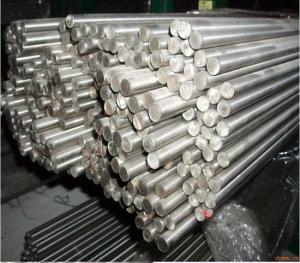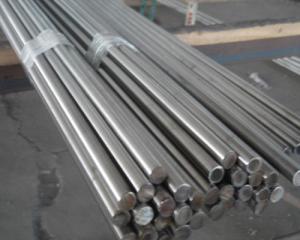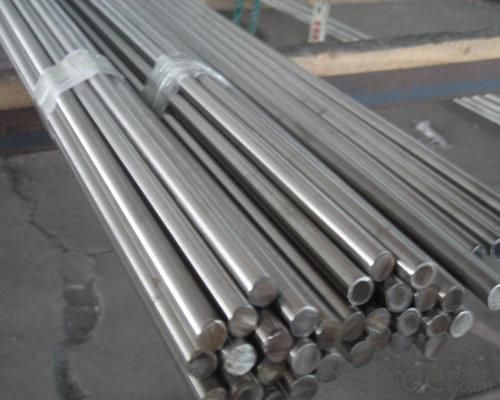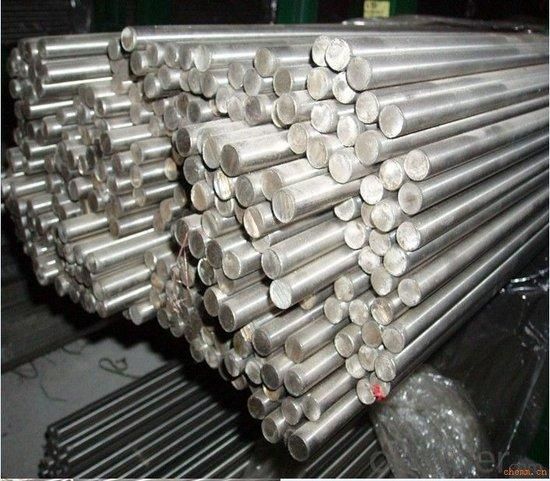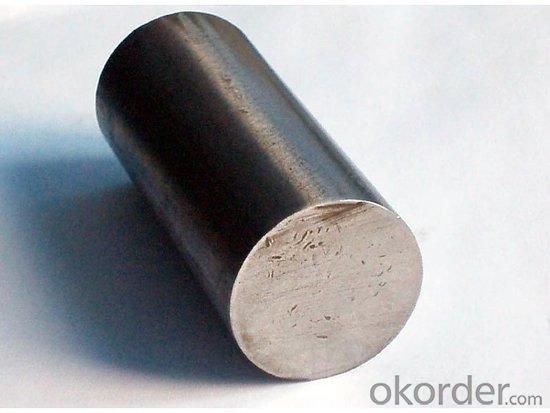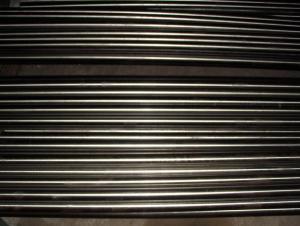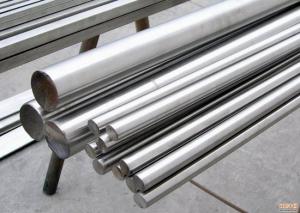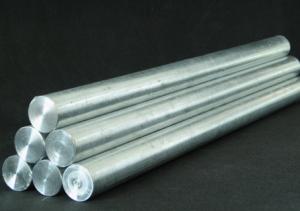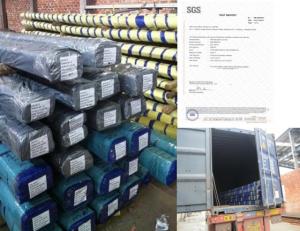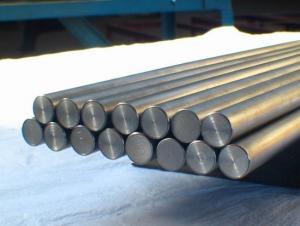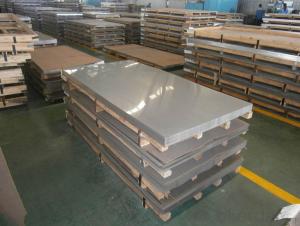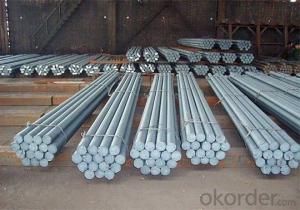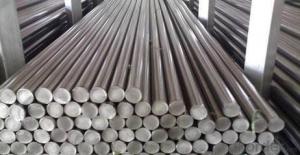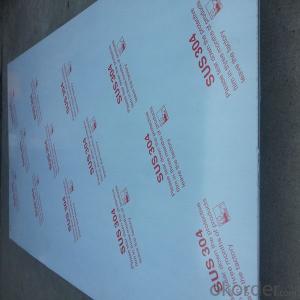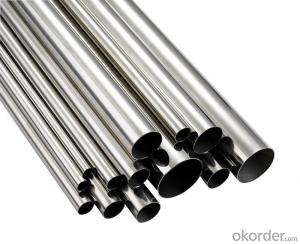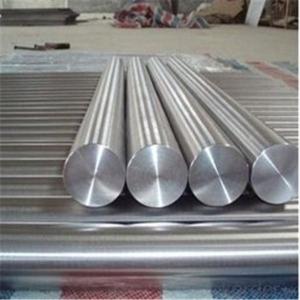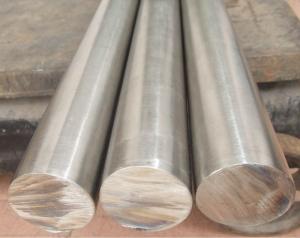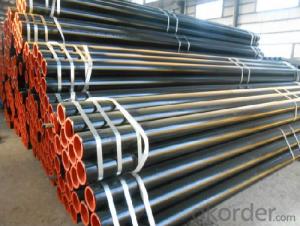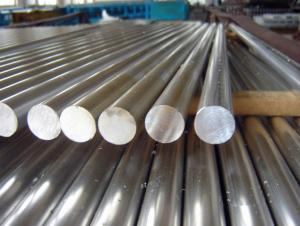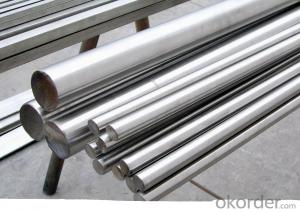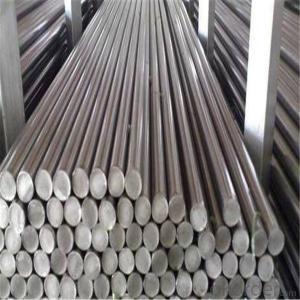321 Stainless Steel Bar
- Loading Port:
- China Main Port
- Payment Terms:
- TT or LC
- Min Order Qty:
- 5 Tons m.t.
- Supply Capability:
- 1000 Tons Per Month m.t./month
OKorder Service Pledge
OKorder Financial Service
You Might Also Like
Stainless Steel Bar
Stainless Steel Round Bright Bar
Hot-rolled Stainless Steel Black Bar
Grades:201、202、301、302、303、304、316、316L、321 etc
|
Diameter (mm) |
weight (kg/m) |
Diameter (mm) |
weight (kg/m) |
Diameter (mm) |
weight (kg/m) |
Diameter (mm) |
weight (kg/m) |
|
2 |
0.025 |
14 |
1.221 |
30 |
5.607 |
50 |
15.575 |
|
3 |
0.056 |
15 |
1.402 |
32 |
6.38 |
55 |
18.846 |
|
4 |
0.1 |
16 |
1.595 |
34 |
7.202 |
60 |
22.428 |
|
5 |
0.156 |
18 |
2.019 |
35 |
7.632 |
65 |
26.322 |
|
6 |
0.224 |
19 |
2.249 |
36 |
8.074 |
70 |
30.527 |
|
7 |
0.305 |
20 |
2.492 |
38 |
8.996 |
75 |
35.044 |
|
8 |
0.399 |
22 |
3.015 |
40 |
9.968 |
80 |
39.872 |
|
9 |
0.505 |
24 |
3.588 |
42 |
10.99 |
85 |
45.012 |
|
10 |
0.623 |
25 |
3.894 |
45 |
12.616 |
90 |
50.463 |
|
11 |
0.754 |
27 |
4.542 |
46 |
13.183 |
95 |
56.226 |
|
12 |
0.897 |
28 |
4.884 |
48 |
14.354 |
100 |
62.3 |
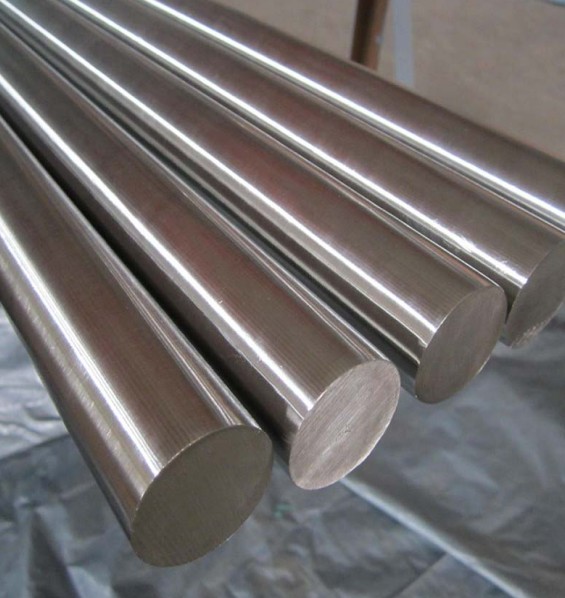
- Q: What is the difference between hot-rolled and cold-rolled stainless steel bars?
- The main difference between hot-rolled and cold-rolled stainless steel bars lies in the manufacturing process and the resulting properties of the finished product. Hot-rolled stainless steel bars are produced by heating a stainless steel billet or bloom at a high temperature and then rolling it into the desired shape. This process results in a relatively rough surface finish and a larger grain structure compared to cold-rolled bars. The hot rolling process also allows for more deformation and shaping, making it suitable for producing larger and more complex shapes. On the other hand, cold-rolled stainless steel bars are produced by taking the hot-rolled bars and further processing them through cold rolling mills. This process involves passing the bars through a series of rollers at room temperature, which results in a smoother and more polished surface finish. Cold-rolling also helps to refine the grain structure, making the bars stronger and more dimensionally precise. In terms of mechanical properties, hot-rolled stainless steel bars generally have lower strength and hardness compared to cold-rolled bars. Cold-rolled bars, due to their refined grain structure, exhibit higher strength, hardness, and dimensional accuracy. This makes cold-rolled bars more suitable for applications requiring precise tolerances or high strength requirements. Additionally, the hot-rolling process can introduce certain surface imperfections or scaling due to the high temperatures involved. Cold-rolling, on the other hand, eliminates these imperfections and improves surface quality. In summary, the main differences between hot-rolled and cold-rolled stainless steel bars are the manufacturing process, resulting surface finish, grain structure, mechanical properties, and dimensional accuracy. The choice between the two depends on the specific application requirements, such as strength, surface quality, and dimensional precision.
- Q: What are the different heat treatment methods for stainless steel bars?
- There are several different heat treatment methods that can be used for stainless steel bars, depending on the desired properties and application requirements. Some of the most common heat treatment methods for stainless steel bars include: 1. Annealing: This is a process of heating the stainless steel bars to a specific temperature and then slowly cooling them. Annealing helps to relieve internal stresses, improve ductility, and restore the material's mechanical properties. 2. Quenching and tempering: This two-step process involves heating the stainless steel bars to a high temperature and then rapidly cooling them in a quenching medium such as oil or water. This step hardens the material, making it stronger and more wear-resistant. The bars are then tempered by reheating to a lower temperature to reduce brittleness and improve toughness. 3. Solution treatment: This method involves heating the stainless steel bars to a high temperature and holding them at that temperature for a specific period of time. This process helps to dissolve any carbides or other precipitates in the material, resulting in improved corrosion resistance and enhanced mechanical properties. 4. Aging: Aging is a heat treatment method that is typically used for precipitation-hardening stainless steels. It involves heating the stainless steel bars to a specific temperature and then holding them at that temperature for a prolonged period of time. This process allows for the precipitation of fine particles within the material, increasing its strength and hardness. 5. Stress relieving: Stress relieving is a heat treatment method used to minimize residual stresses in the stainless steel bars. It involves heating the bars to a specific temperature and then slowly cooling them. This process helps to reduce the risk of distortion or cracking during subsequent machining or forming operations. These heat treatment methods can be combined or modified to achieve specific properties and performance characteristics required for different applications. It is important to consult with material experts and follow industry standards and guidelines to ensure the appropriate heat treatment is applied to stainless steel bars.
- Q: Can stainless steel bars be used in the power generation aftermarket?
- In the power generation aftermarket, stainless steel bars are indeed applicable. Renowned for their exceptional strength, resistance to corrosion, and durability, stainless steel bars are an optimal choice for a variety of uses within the power generation industry. They can be utilized in the construction of power plants, turbines, generators, and other equipment. The bars exhibit remarkable durability and can withstand high temperatures, pressure, and even harsh operational conditions, guaranteeing dependable performance and longevity. Furthermore, stainless steel bars are resistant to corrosion caused by chemicals, moisture, and gases, making them suitable for power generation facilities both indoors and outdoors. All in all, stainless steel bars provide a reliable and cost-effective solution for the power generation aftermarket.
- Q: Can stainless steel bars withstand high temperatures?
- Indeed, high temperatures pose no challenge to stainless steel bars. Renowned for their ability to resist heat, stainless steel bars retain their strength and structural integrity even when subjected to elevated temperatures. The precise temperature range that stainless steel can endure is contingent upon the specific grade of steel employed. In general, stainless steel bars can withstand temperatures reaching 1500-1600 degrees Fahrenheit (815-870 degrees Celsius) without compromising their mechanical properties. This renders stainless steel bars ideal for a myriad of high-temperature uses, including those within the aerospace, automotive, and chemical sectors, where they encounter intense heat and thermal strain.
- Q: Can stainless steel bars be used in water treatment facilities?
- Indeed, water treatment facilities can utilize stainless steel bars. Due to its remarkable resistance to corrosion, stainless steel is extensively employed in environments where water is prevalent, such as water treatment facilities. Its exceptional corrosion resistance properties render it the perfect choice for water treatment applications. To guarantee durability and prolonged effectiveness, stainless steel bars can be incorporated into diverse components of water treatment facilities, including pumps, valves, tanks, and piping systems. Moreover, stainless steel is both hygienic and effortless to clean, which makes it well-suited for facilities that demand strict compliance with sanitation standards.
- Q: Can stainless steel bars be used in the oil refining industry?
- Yes, stainless steel bars can be used in the oil refining industry. Stainless steel is a corrosion-resistant alloy that offers excellent strength and durability, making it suitable for various applications in the oil refining industry. It is commonly used in equipment and components such as pipelines, tanks, valves, and fittings due to its ability to withstand harsh conditions, including high temperatures, pressure, and exposure to corrosive substances. Stainless steel bars are often preferred in this industry for their resistance to corrosion, which helps to prevent leaks and maintain the integrity of the refining process. Additionally, stainless steel is easy to clean and maintain, making it a cost-effective choice for oil refining operations.
- Q: Are stainless steel bars resistant to chemicals?
- Stainless steel bars exhibit exceptional chemical resistance due to their high chromium content, which results in the formation of a protective layer called the passive film. This film effectively shields the metal surface from chemical reactions, enabling stainless steel bars to endure exposure to a diverse array of substances, including acids, alkalis, solvents, and even aggressive compounds. Consequently, these bars find application in numerous sectors, such as chemical processing, pharmaceuticals, and food processing, where they may encounter various chemical substances. As a result of their remarkable resistance to chemical attack, stainless steel bars guarantee longevity and durability, even in demanding environments.
- Q: Do stainless steel bars have good formability?
- Yes, stainless steel bars generally have good formability. Stainless steel is known for its excellent ductility, meaning it can easily be shaped and formed into various shapes without cracking or breaking. This makes stainless steel bars a popular choice in industries such as construction, automotive, and manufacturing, where formability is a critical requirement. Additionally, stainless steel also offers good resistance to corrosion and high temperatures, further adding to its versatility and suitability for various applications.
- Q: What are the different surface finishing methods for stainless steel bars?
- There are several surface finishing methods available for stainless steel bars, each offering unique benefits and aesthetic qualities. Some of the most common methods include: 1. Mill Finish: This is the standard finish achieved after the manufacturing process, characterized by a smooth, raw surface. It is often used for applications where appearance is not a priority. 2. Brushed Finish: Also known as satin finish, this method involves brushing the surface with abrasive materials to create a uniform, directional grain pattern. It provides a clean and contemporary look while hiding minor scratches and fingerprints. 3. Mirror Finish: Achieved through a process of polishing and buffing, this method results in a highly reflective and smooth surface. It is commonly used for decorative applications where a luxurious and visually appealing appearance is desired. 4. Bead Blast Finish: In this method, tiny glass beads are blasted onto the surface of the stainless steel bar, creating a uniform matte texture. It provides a non-reflective and uniform appearance, making it ideal for applications where glare reduction is important. 5. Passivation: This is a chemical process that removes contaminants and enhances the corrosion resistance of stainless steel bars. It involves immersing the bars in a bath of nitric or citric acid, which helps to remove surface impurities and restore the passive film. 6. Electroplating: This method involves applying a layer of metal, such as chrome or nickel, onto the surface of the stainless steel bar. It can enhance the appearance and provide additional protection against corrosion. 7. PVD Coating: Physical Vapor Deposition (PVD) is a technique where a thin layer of metal is deposited onto the stainless steel surface using a vacuum chamber. This method allows for a wide range of colors and finishes, including gold, bronze, and black, providing both aesthetic appeal and durability. Each of these surface finishing methods offers different visual effects, protection levels, and durability, allowing stainless steel bars to meet various functional and aesthetic requirements. The choice of finishing method depends on the specific application, end-use, and desired appearance.
- Q: Can stainless steel bars be coated or painted?
- Yes, stainless steel bars can be coated or painted. While stainless steel is known for its resistance to corrosion, there are various reasons why someone may want to coat or paint stainless steel bars. Coating or painting stainless steel bars can enhance their appearance, provide additional protection against corrosion or wear, and allow for color customization. However, it is important to note that the coating or paint used should be specifically designed for stainless steel and applied correctly to ensure durability and maintain the stainless steel's inherent properties.
1. Manufacturer Overview
| Location | Wuxi,China |
| Year Established | 2003 |
| Annual Output Value | Above US$8.3 Million |
| Main Markets | SouthEast Asia |
| Company Certifications | ISO9001:2000 |
2. Manufacturer Certificates
| a) Certification Name | |
| Range | |
| Reference | |
| Validity Period |
3. Manufacturer Capability
| a) Trade Capacity | |
| Nearest Port | Shanghai |
| Export Percentage | 30% |
| No.of Employees in Trade Department | 30 People |
| Language Spoken: | English;Chinese |
| b) Factory Information | |
| Factory Size: | Above21,000 square meters |
| No. of Production Lines | Above 7 |
| Contract Manufacturing | OEM Service Offered;Design Service Offered |
| Product Price Range | Average |
Send your message to us
321 Stainless Steel Bar
- Loading Port:
- China Main Port
- Payment Terms:
- TT or LC
- Min Order Qty:
- 5 Tons m.t.
- Supply Capability:
- 1000 Tons Per Month m.t./month
OKorder Service Pledge
OKorder Financial Service
Similar products
Hot products
Hot Searches
Related keywords
